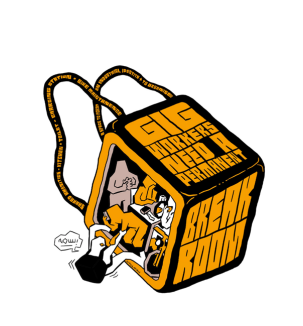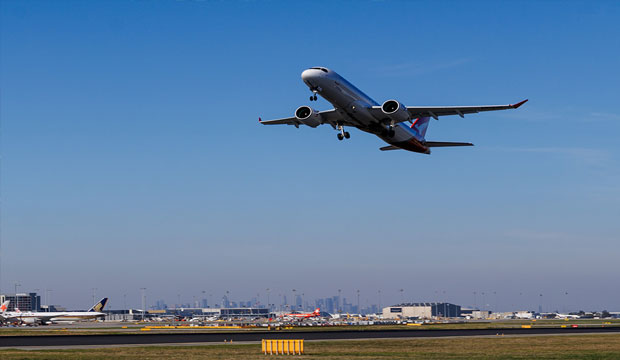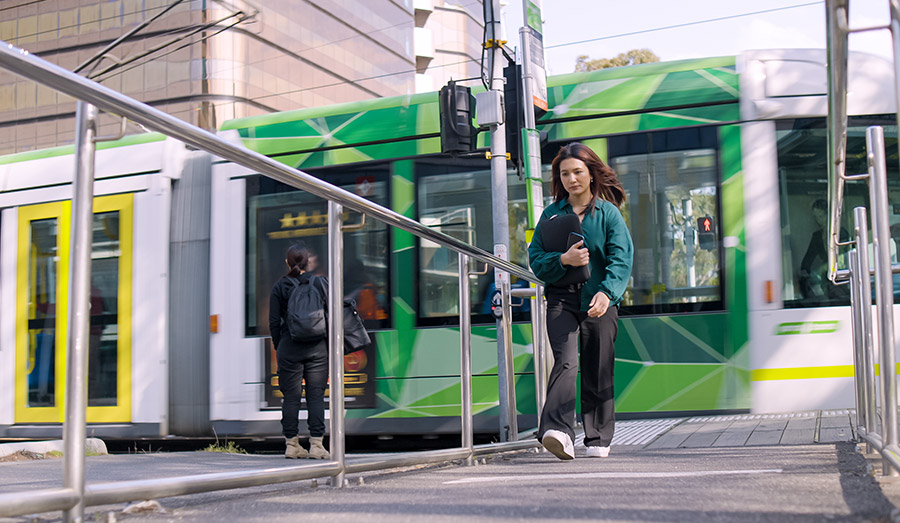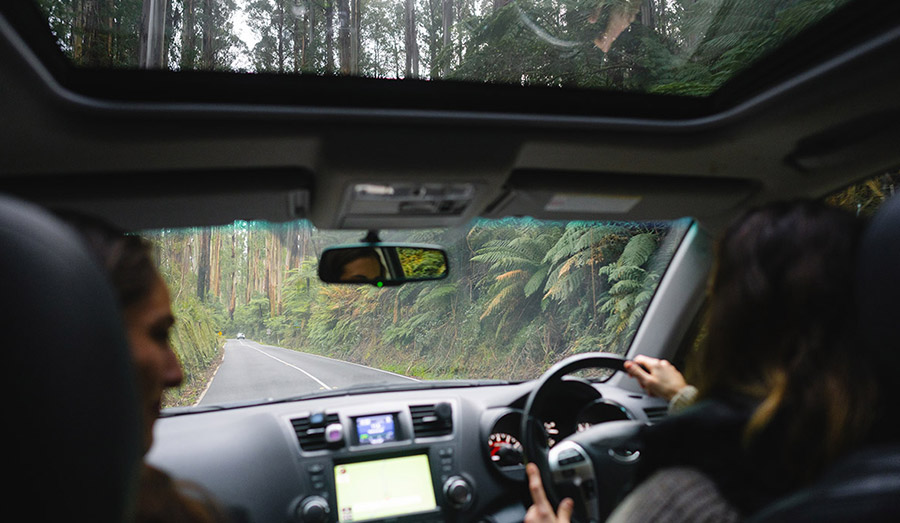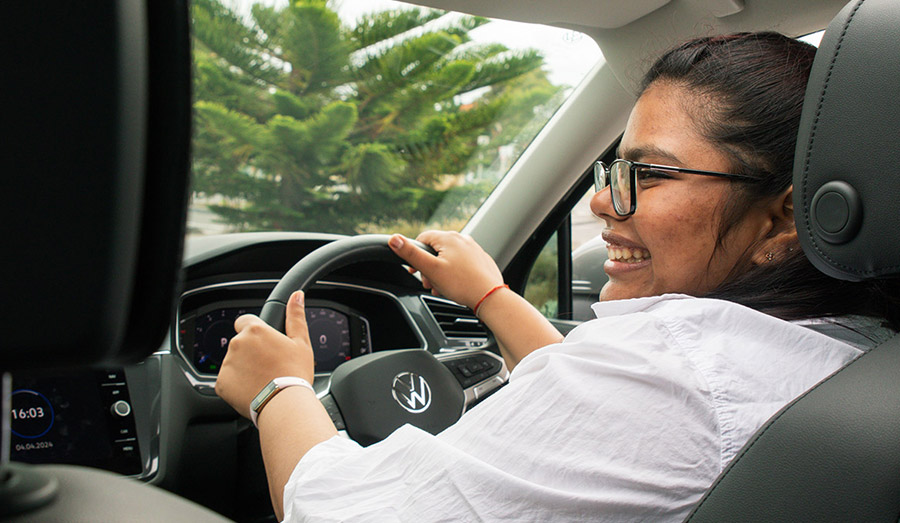Melbourne is a cycle-friendly city, which means you will see people of all ages, abilities and levels of confidence riding push bikes, e-bikes, scooters and e-scooters.
While some ride for leisure, others make it part of their daily commute to work, school or university. In fact, Victoria leads Australia in bicycle usage, with an estimated 2.5 million residents using bicycles every year.
Bike safety
Before you set out on your cycling adventure, there are a few important rules you need to know to keep yourself and others safe.
Wear a helmet
Whenever you’re on a bike, you are legally required to wear a helmet. A well-fitted helmet is your best defence against serious injury in the case of a fall or collision.
Ride in the right places
In Victoria, you cannot ride on the footpath unless you are under the age of 13 or accompanying someone who is. Cyclists must stay in designated bike lanes or on the road if no bike lanes exist. Bicycles are also prohibited on some roads, like metropolitan freeways.
Food Delivery Riders
Food Delivery Riders
- Ride on the road, not the footpath - to keep pedestrians safe.
- Stop at red lights and stop signs - to make sure intersections are safe for all road users.
- Pull over if you need to scroll on your mobile phone – to stay focused and keep your eyes on the road (read more information below).
- Check your e-bike is legal before renting or buying. There are only two types of e-bikes that are legal to ride on Victorian roads. Each one has specific requirements you must follow. Check with a bicycle mechanic if you are not sure if your e-bike is legal or not.
Make sure you know what you can and can’t do, and how to share the road safely with others.
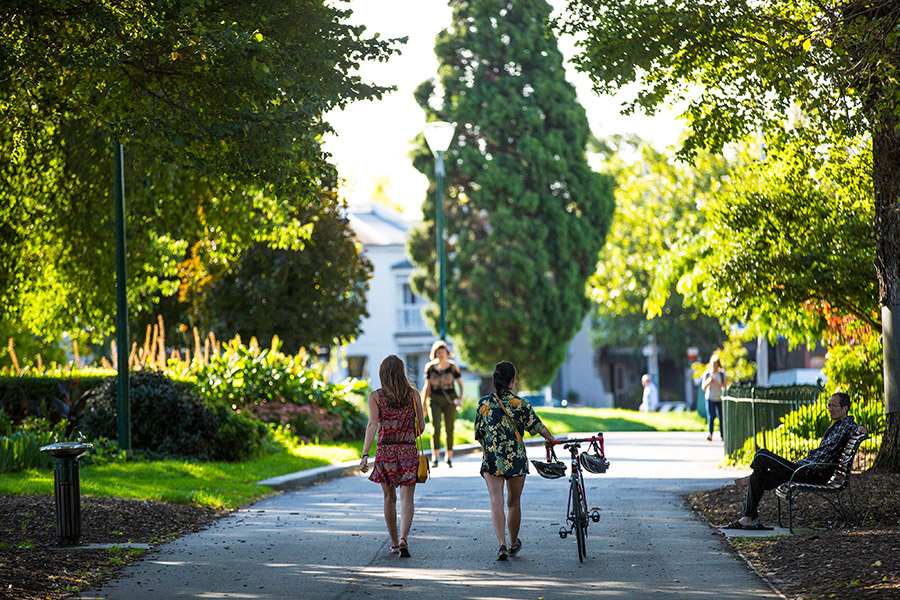
Be aware of your surroundings
It’s essential to stay alert and be aware of what is around you when you are riding.
On the road, be aware of the other vehicles, including cars, trams and other cyclists. It’s important to watch out for people opening car doors which can be hazardous to riders.
If you wish to ride through a park, make sure cycling is allowed before you go. Stay in the bike lane or the left-hand side of the path and only overtake others when it is safe to do so.
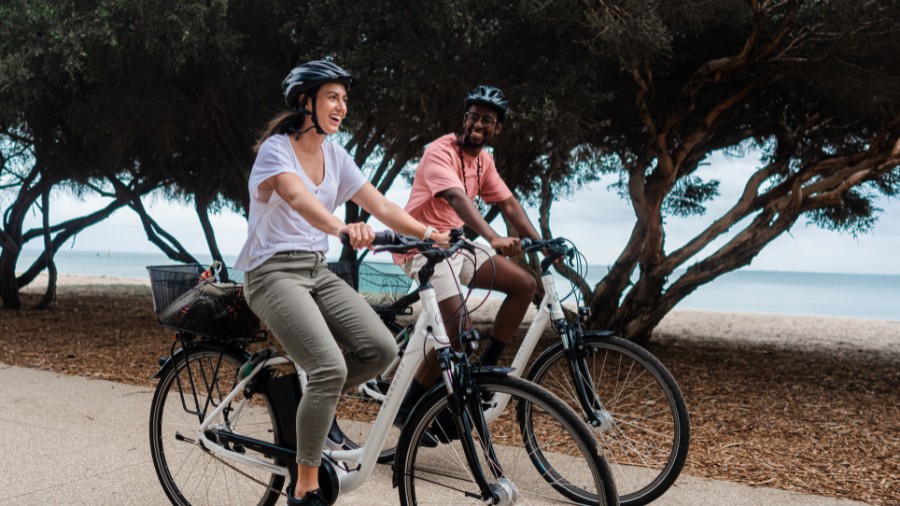
Maintain your bike
Of course, one of the most vital safety tips is to make sure your bicycle is always in good working order.
Regular bike maintenance includes checking your tyres are properly inflated, your chain is greased and your brakes are working. If in doubt, you can always visit a local bicycle mechanic.
Know the road rules
When cycling in Melbourne, you must know and follow Victorian road rules. This includes obeying traffic signs, stop lights and road markings, as well as not riding under the influence of alcohol and not using your mobile phone.
Additionally, bicycle riders must signal before turning right by holding out their right arm. You don’t need to signal to turn left, but it’s recommended you do so for safety.
View transcript
[Music beat, flat cartoon characters riding bikes through the trees wearing helmets a bright colours.]
[Speaker] We all know why riding a bike is so good. It's fun, it's great for us, it's great for the environment and great to do with others.
But whilst riding a bike is fun, getting hurt isn't.
So we need to follow five important rules to help keep us safe whilst we ride our bikes.
[Text on screen: Wear a helmet]
We need to protect ourselves if we fall off so we have to wear helmets our brains are very precious
So we wear helmets to stop at getting hurt, it's the law.
We need to be seen whilst riding our bikes.
[Text on screen: Wear bright clothes]
This means we should be wearing bright clothes like this, or this.
That way everyone knows where we are.
We need to protect our feet and help us grip the pedals.
[Text on screen: Wear good shoes]
So we need to wear good, strong shoes that cover our toes this stops us slipping when we're riding
We need a bike that is safe to ride.
[Text on screen: Check your bike first, inspect chain, check air, visuals of two children on bikes followed by close ups of the chain and bike tyre]
So we should make sure that it's the right size and do a quick check that it's safe to ride before we start riding and most importantly we need to have a safe attitude.
[Text on screen: Have a safe riding attitude, visuals of car driving out of driveway when bike is coming along the street]
The rider is the most important safety equipment when we ride the most important task is to ride safely.
This means we always try to avoid other people and objects keep to a safe speed and always know what else is around us if we ride with a safe attitude then we'll keep having fun.
[Text on screen, checklist including: Wear a helmet, wear bright clothes, wear good shoes, check your bike first and have a safe riding attitude. Visuals: child on bike wearing helmet and bright clothes]
So remember wear a helmet, wear bright clothes, wear good shoes, check your bike first, have a safe riding attitude.
E-scooter safety
If you prefer to ride an e-scooter, make sure you know the e-scooter rules in Melbourne.
Wear a helmet
Like cyclists, e-scooter riders must always wear a helmet. To protect yourself properly, make sure your helmet is the right size and always keep it buckled securely.
Ride by yourself
Remember that you cannot carry passengers or animals with you when riding an e-scooter. Doing so is illegal and dangerous, so ensure you always ride alone.
Stick to the speed limit
In Victoria, e-scooter users cannot go faster than 20km per hour. To protect your safety, it’s also illegal to use an electric scooter on a road with a speed limit of more than 60km per hour.
Follow the road rules
E-scooter users are required to follow the road rules. This includes not riding under the influence of alcohol and not using your mobile phone while operating your e-scooter.
E-scooter riders must follow the signs, traffic lights and road markings and cannot ride on the footpath. Instead, stay in the designated bike paths or on the road. E-scooter users are allowed to use the shared paths in some parks and reserves.
Find out more about cycling or e-scooter use in Victoria on the Transport Victoria website.
Page last updated:

